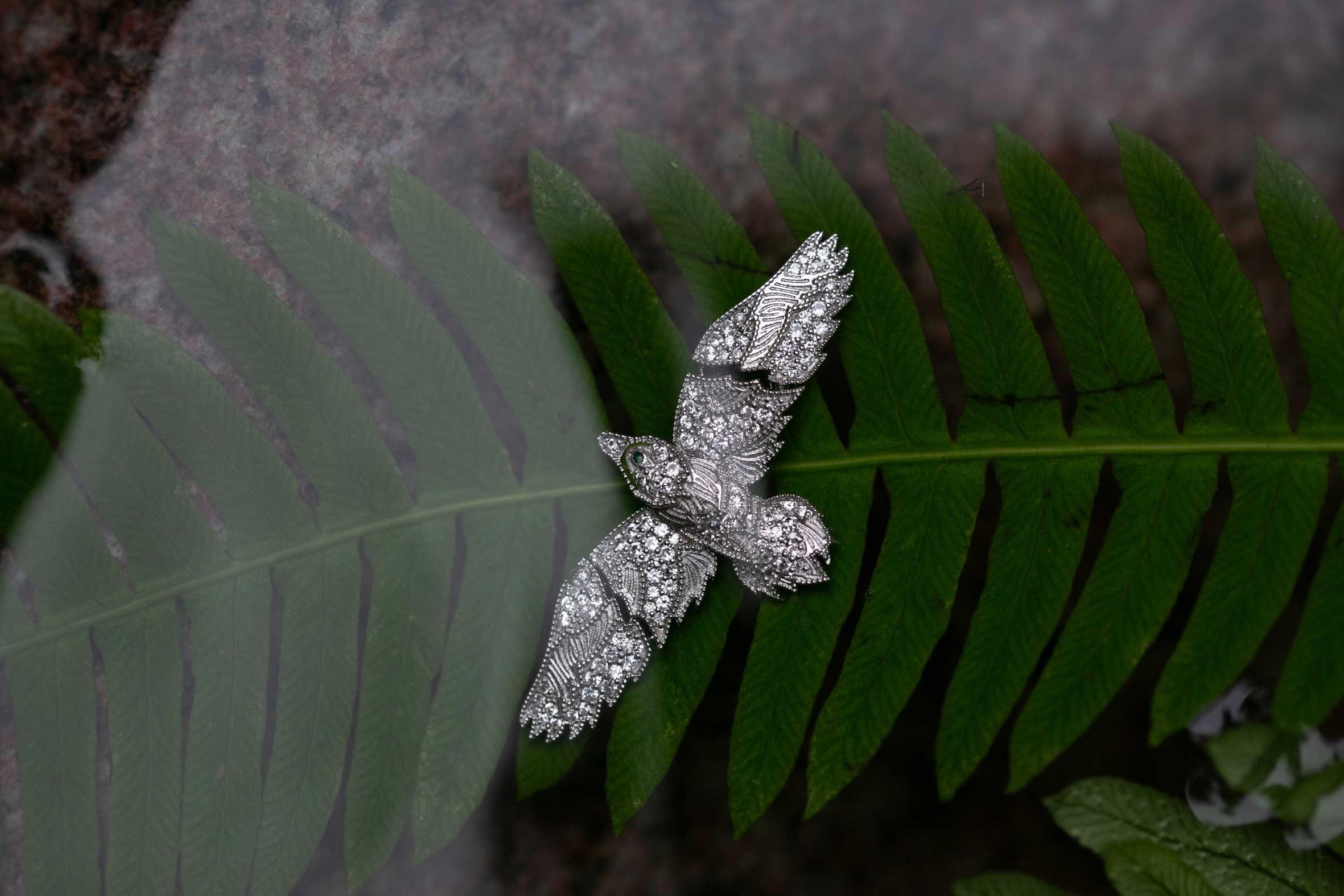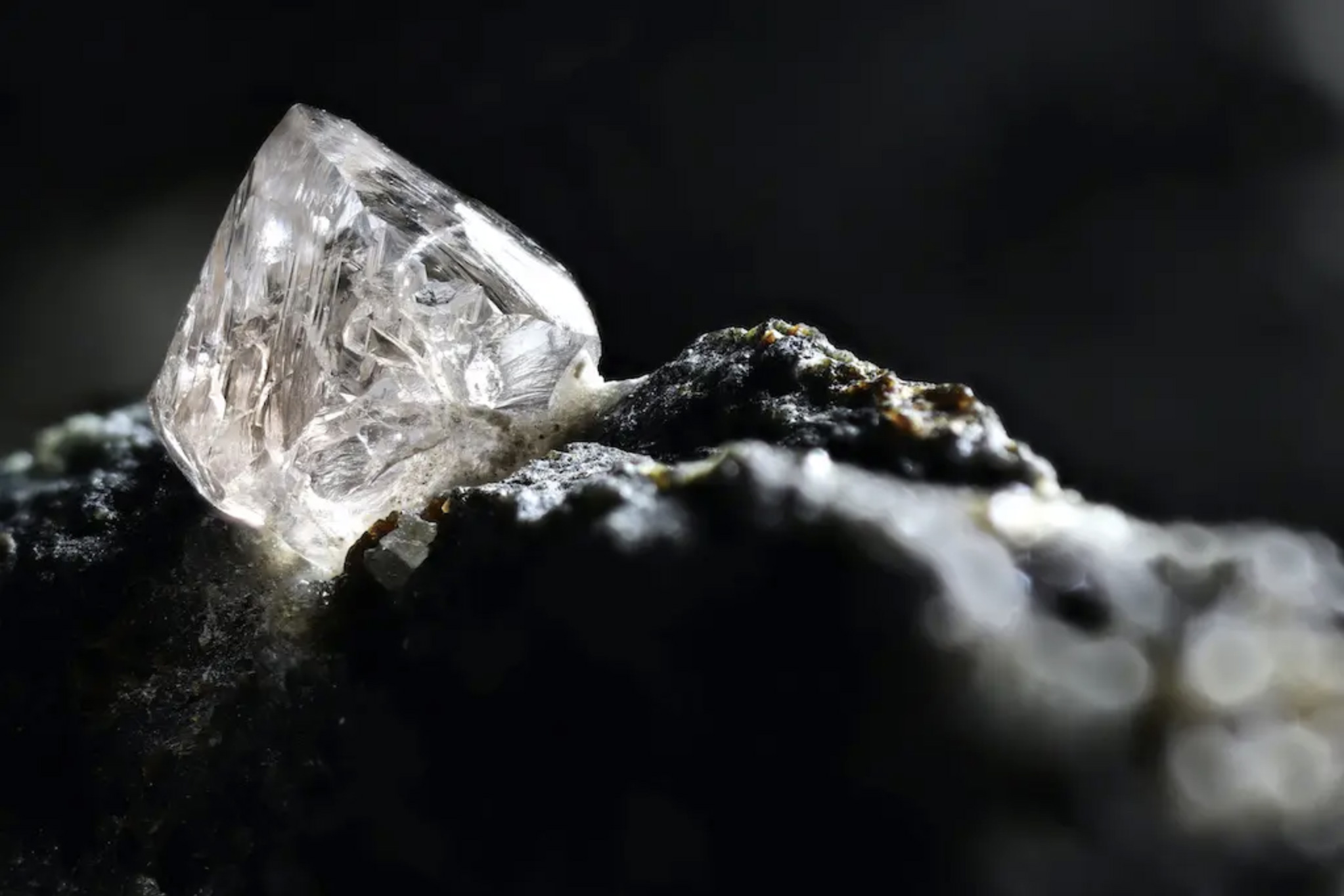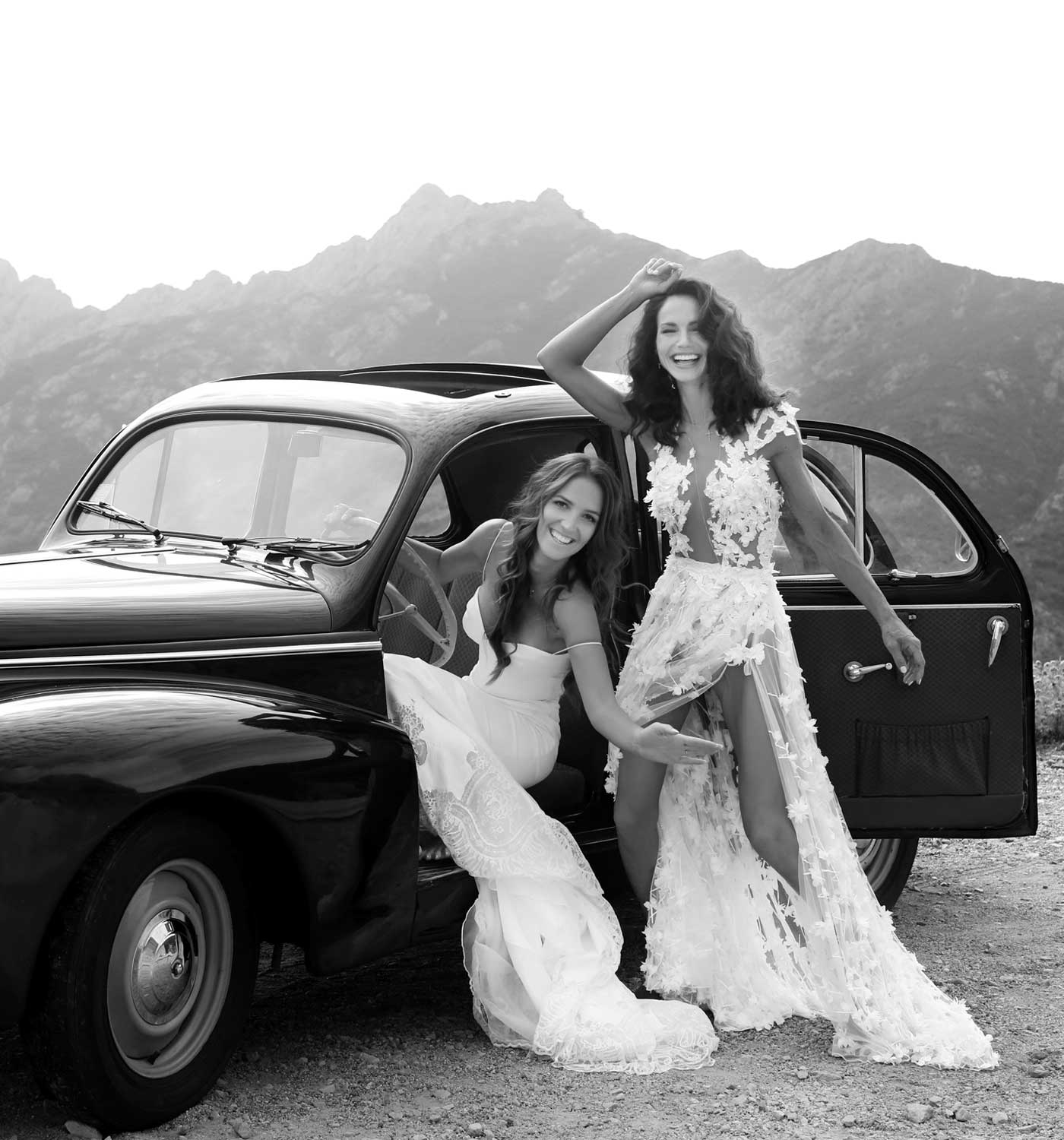LE DIAMANT
Pour Marilyn Monroe, les diamants étaient « les meilleurs amis des femmes» et pour Shirley Bassey, « les diamants sont éternels ». Ces deux chansons populaires modernes représentent la fascination que cette pierre a toujours exercée.
Chez Maria Battaglia nous pensons que la connaissance est gage de bonheur et de liberté, c’est pourquoi nous vous proposons de vous enrichir de ces quelques connaissances, pour partager avec vous l’amour inconditionnel que nous avons pour cette gemme extraordinaire.
Le diamant, reine de toutes les pierres précieuses, une pierre plus dure que n’importe quelle autre matière, faisant de la lumière un spectacle comme nul autre quand elle se met à la refléter. Le mot diamant vient du Grec « adamas », qui veut dire imprenable ou invincible.
Inspiratrice de tous les rêves, de toutes les croyances, de toutes les déclarations d’amour, c’est la matière la plus ancienne que l’on puisse posséder ; de 50 millions d’années pour les gisements les plus récents à 2,5 milliards d’années pour les plus anciens.
Le diamant est constitué de carbone, élément chimique fondateur de la vie, dans sa forme la plus concentrée.
Formé à plus de 150 Km sous terre et remonté à la surface par les volcans, la plupart des diamants ont cristallisé au plus profond des entrailles de la Terre entre 120 et 200 km de profondeur - à partir de roches apparues il y a 3,3 milliards d'années. Pour remonter jusqu'à nous, le diamant a donc vécu une aventure extraordinaire en subissant des pressions géologiques considérables et des températures atteignant plus de 2000 °C.


En fait, l'éclat de cette pierre a un secret: le diamant est la gemme qui freine le plus les rayons de la lumière lorsqu'ils la pénètrent. Ainsi, l'art du tailleur consiste d'abord à maîtriser ces rayons pour faire ressortir le maximum de lumière par la plus grande des facettes, la «table». Puis «l'angle optimalisé» des facettes, un polissage parfait et la bonne harmonie des proportions donneront l'éclat et la magie à la pierre.
Taillée à la perfection, elle symbolise la vie, la lumière, le feu, la force, la pureté et l'amour.
D’un point de vue économique son éclat est tout aussi intense, le diamant absorbe à lui seul près de 80% du marché des gemmes dans le secteur de la joaillerie, alors que les pierres précieuses représentent environ 15% du marché (saphir, émeraudes, rubis), les 5% restants, correspondant aux pierres fines (améthystes et aigues marines notamment).
Pour le diamant, chaque année, ce ne sont pas moins de 20 à 25 millions de carats qui se vendent dans le monde !!!
Mais d’où vient l’énergie, la magnificence, l’unique attrait pour cette pierre ?
Chez Maria Battaglia nous avons la réponse, elle vient d’un pays où la spiritualité est toute chose, là où plus d’un million de personnes taillent et façonnent 65% des diamants du monde, un pays où les bijoux font parties de la culture de tout un chacun, là où le corps et l’esprit ne font qu’un, là où les arts et métiers sont devenus une science que l’on nomme le Shilpa Shastras, le pays des mille et une nuit, vous l’avez compris c’est bien de l’Inde que nous parlons ici.
L’INDE ET LES DIAMANTS, UNE EXTRAORDINAIRE HISTOIRE D’AMOUR
Chaque année, le marché mondial du diamant croît de 15 %. Sur 13 diamants, 12 sont taillés en Inde. Aujourd'hui, l’Inde a le leadership et a pris le contrôle de la plus grande partie du marché actuel de la « reine des gemmes ». Ce que peu de gens savent c’est qu’au X siècles avant Jésus Christ, les premiers diamants étaient extraits des terres de ce fantastique pays.
Le diamant a toujours fasciné l’humanité depuis des millénaires. Les premiers diamants à avoir été trouvés étaient en Inde. En fait, en raison de l’absence de documents écrits concernant le commerce des diamants, les experts pensent que les diamants n’ont probablement pas pu quitter l’Inde avant le Xème siècle avant JC.
Un des premiers documents mettant en évidence le fait que les gens connaissaient l’existence des diamants remonte au 4ème siècle avant JC. Il s’agit de l’Artha-Castra, le code indien sur les impôts concernant les pierres précieuses. Les premiers minerais étaient exploités en Inde au 8ème siècle avant JC et le commerce de pierres précieuses est antérieur à la période romaine. Des diamants se trouvaient dans la région de Golconda depuis quelques 4000 ans.
Afin de définir les taux d’imposition sur les diamants, le Artha-Castra se réfère à un certain nombre de pratiques et de règles mises en place par des spécialistes qui démontrent avoir une connaissance approfondie des diamants pour cette époque-là. Ce code des impôts allait devenir un véritable recueil d’informations connu sous le nom de “Ratnapariska”. Pendant plus de mille ans, cette doctrine allait donner naissance à des manuels techniques appelés “Ratna-Castra”, que tout homme respectable allait posséder, allant du poète aux nobles en passant par les commerçants.
Dans chacun de ces manuscrits, le diamant est décrit comme un bijou par excellence. Plusieurs des caractéristiques du diamant y sont décrites. La forme de la pierre, l’octaèdre (polyèdre à 8 faces), était considérée comme la forme idéale. La pureté, la couleur et l’éclat étaient tout autant décrits dans ces documents anciens.
L’Inde allait demeurer le producteur de diamants bruts le plus important au monde jusqu’en 1730. Avant cette date, les pierres brutes étaient directement montées. Comme celles-ci n’étaient pas polies, elles n’avaient pas l’éclat des pierres taillées et polies d’aujourd’hui.
Les pierres brutes étaient amenées de Kalinga et Bombay (Mumbai) puis acheminées au Golfe Persique, en Egypte et à Rome.
Tous les diamants historiquement célèbres comme le «Hope», 45 Carats d’un bleu envoutant, le «Koh-i-Noor», 105 Carats faisant de lui le joyau des joyaux ou encore « L’oeil De L’idole », 70 carats de pureté absolue, tous proviennent d’Inde.
De manière poétique, les Indiens considéraient ces pierres précieuses comme les fruits des étoiles aux origines sacrées ou magiques. Les diamants étaient considérés comme possédant des pouvoirs de protection et, en conséquence, étaient des pierres destinées à la royauté.
LE DIAMANT COUPE ROSE OU ENCORE LE POLKI DIAMONDS, UN CHOIX AVERE, ASSUME :
« La mode est un éternel recommencement » disait Yves Saint Laurent.
Beaucoup de joailliers traditionnels se passionnent actuellement pour des tailles de diamant qui n’étaient plus pratiquées depuis la fin du 19e siècle, du moins, depuis les travaux de physique et d'optique de l'Anversois Marcel Tolkowsky, qui mit au point en 1919 ce qu'on appelle aujourd'hui « la taille brillant ».
Avec ses 58 facettes d'une parfaite régularité, elle permet d'apporter à la pierre, quitte à la réduire le maximum, d'éclat et de brillance. Les calculs de Tolkowsky imposent dès lors une nouvelle norme qui privilégie le feu d'une gemme plutôt que son poids en carats.
La coupe de rose pourtant l'un des styles de coupe les plus anciens au monde pour les diamants, apparu dans les années 1500, extrêmement populaire dès les années 1700 tombe en désuétude avant la deuxième guerre mondiale, les acheteurs préférant à une couleur charnelle, certains parlent même de couleur champagne, des diamants très blanc et aux mille feux.
Un diamant en coupe rose a un fond plat et un haut en forme de dôme. La coupe rose peut prendre de nombreuses formes. Les plus courantes sont les formes de carré, d'ovale et de poire. À mesure des années, le nombre de facettes sur cette ancienne coupe a progressé jusqu'à ce que le total des facettes atteigne 24.
La plupart des diamants « rose cut » trouvés dans les bijoux anciens des années 1700 et 1800, ont des inclusions (particules étrangères piégées dans le cristal), ainsi qu'une légère couleur corporelle. Les inclusions ajoutent une personnalité unique à chaque diamant. À cette époque, les diamants étaient évalués à la lumière des bougies, et des diamants de couleur jaune ou grisâtre brillent chaleureusement.


Le classement des diamants organisés n'est apparu qu'après les années 1940. Les diamants de qualité inférieure sont le choix parfait pour la coupe de rose moins brillante. Cela est dû au fait que les diamants avec une meilleure clarté et la couleur vont chercher des prix plus élevés lorsqu'ils sont coupés pour maximiser le feu et l'éclat.
Les coupures de rose anciennes tombent normalement dans la classe de clarté SI (légèrement incluse) et I ou inférieure en qualité de couleur .
Les coupes de rose modernes tombent généralement dans les notes de clarté SI et I (incluses) et G ou moins en couleur.
Tous nos diamants chez Maria Battaglia sont certifiés GSI ou ISI et proviennent de filières de sourcing répondant à tous les critères d’identification et de provenance du processus de Kimberley (accord international de la certification des diamants bruts)
C’est donc loin des conventions que nous avons fait le choix du diamant taille « Rose Cut » désigné ainsi par les gemmologues, appelé aussi « Polki Diamonds », terme consacré à ce dernier en Inde. Délaissée depuis plus d'un siècle par les grandes marques, cette façon irrégulière de tailler le diamant inspire pourtant aujourd'hui les plus grands créateurs.
« Nos diamants ainsi sertis par des griffes d’or rose 18 Cts sur des montures toujours très minimalistes, renvoient un éclat mystérieux et donnent naissance à des bijoux très actuels. Cette préférence pour les diamants taille rose et les pierres fines brutes que vous trouverez dans notre collection «VOYAGES » donnent de la noblesse à l'irrégularité des pierres indiennes qui opèrent alors comme un aimant sur notre regard moderne, ces diamants ont intrinsèquement moins de valeur, ils ne sont pas calibrés, mais taillés à la main et sertis artisanalement ils ont un caractère unique… »
Nous revendiquons cette promesse d’inventivité et d’innovation permanente, cette promesse du goût pour l’exclusivité quitte à faire bouger les lignes des conventions stylistiques entendues. Nous voulons vous surprendre, vous permettre de porter des bijoux mettant en exergue votre personnalité et votre singularité.
Jaipur, Bombay, Pune ont une destinée commune avec Paris, elle est inscrite depuis des centaines d’années au travers des créations joaillières plus foisonnantes qu’extraordinaires, Tous les grands acteurs français de la place Vendôme ont vécu ce voyage à travers les temps, les rêves et les cultures de ces 2 pays qui ont inspirés le monde entier par leur créativité n’ayant d’égal que leur technicité. De cette rencontre culturelle sont nés surement les plus beaux bijoux du monde.
Pour s’en convaincre la visite en 2018 de l’exposition au Grand Palais ; « Des grands Moghols aux Maharadjas présentaient es joyaux indiens de la collection Al Thani , cette féerie visuelle vous transporte dans un monde de couleurs, d’opulence et de démesure. On peut légitimement se poser la question de savoir qui, de la place parisienne ou de la joaillerie indienne, a envoûté l’autre ?
Nous nous réclamons de cet amour de la fusion des cultures et des talents pour tenter le saut créatif avec chacun de nos produits nous rapprochant un peu plus de ce que l’universalité à de rassurant tant elle permet à l’individu d’être libre et heureux.

